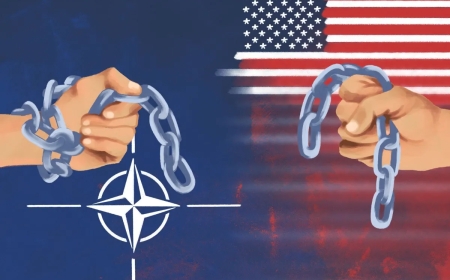The Worsening Disparities in Employment: A Closer Look at Rising Unemployment for Black Women
The U.S. labor market exposed alarming patterns in November 2024 that throw a pall over the country's economic recovery. Although the general unemployment rate only slightly changed from 4.1% to 4.2%, the increase did not go equally across all groups.

The U.S. labor market exposed alarming patterns in November 2024 that throw a pall over the country's economic recovery. Although the general unemployment rate only slightly changed from 4.1% to 4.2%, the increase did not go equally across all groups. The startling rise in unemployment for Black women, whose jobless rate jumped from 4.9% to an astounding 6%, representing a more than one percentage point change, particularly caught attention. This growing disparity emphasizes the ongoing injustices that underlie underprivileged groups in the American workforce, even while the economy seems to be following a gradual recovery path.
The statistics show a startling picture of a labor market failing to provide fair chances for everyone even if it is still strong by historical criteria. The change in unemployment was more noticeable for Black women than it was for White women, whose rate just marginally rose from 3.3% to 3.4%. Likewise, although Black men's unemployment rate climbed from 5.7% to 6%, it still lags far behind the 6% unemployment rate among Black women. Black women's unemployment gap is more than just a number; it's a sobering reminder of the ingrained disparities still impeding African American communities' economic growth.
Critics contend that the sluggish but consistent increase in unemployment for Black workers—reaching 6.4% overall for Black individuals in November, up from 5.7% in October—reflects the structural hurdles that have long persisted in the U.S. labor market. Black workers, especially Black women, who typically suffer compounded disadvantages including racial discrimination, gender bias, and a lack of access to higher-paying employment or educational possibilities, are disproportionately affected by these impediments. The labor market is "gradually cooling," as Kevin Rinz, senior fellow and research advisor at the Washington Center for Equitable Growth, rightly pointed out, but it is also less suited to provide the gains for underprivileged groups that it did in the near aftermath of the epidemic. Particularly for Black women, the increase in unemployment marks a concerning reverse of achievements attained during the post-pandemic recovery phase.
Another important measure of the involvement of the working-age population with the employment market, the general labor force participation rate also showed indications of decrease. It dropped from 62.6% in October to 62.5% in November, so sliding downward. The number plummeted even further among Black women, to 62.3%, pointing to a worrying trend of worker disengagement perhaps resulting from the combination of limited career possibilities and workplace discrimination. From 69.3% to 68.7%, Black men's labor force participation rate likewise dropped. These numbers imply that Black workers suffer especially from the declining job market, therefore aggravating already existing racial inequalities.
Black women and other underprivileged groups' increasing unemployment draws attention to a pressing problem legislators cannot afford to overlook. Although the general state of the economy seems to be good, many Black Americans—especially Black women—have realities far less bright. Black women have borne the most of the unemployment rise, which suggests a system that ignores the particular difficulties black workers encounter. Black women in the workforce remain hampered by discrimination, poor access to education and training courses, and underrepresentation in higher-paying professions.
These patterns have ramifications beyond Black women's current socioeconomic hardships. The continuous increase in unemployment for this group could impede general economic development by lowering the purchasing power and consumer expenditure of a sizable section of the population. Moreover, the incapacity of underprivileged groups to completely engage in the job market compromises the promise of the American Dream, in which equal opportunity is supposed to be a basic right for all.
Ultimately, the rise in unemployment among Black women combined with the more general differences in labor force participation reminds us sharply that the route to economic recovery is not exactly fair. Policymakers must solve the institutional obstacles that have left Black women and other underprivileged groups behind as the job market cools. Ignoring this not only helps to maintain inequality but also reduces the whole capacity of the American economy. Many will be deprived of the promise of a really inclusive recovery until significant action is taken to close these gaps.













































